#Swedish mythology
Text
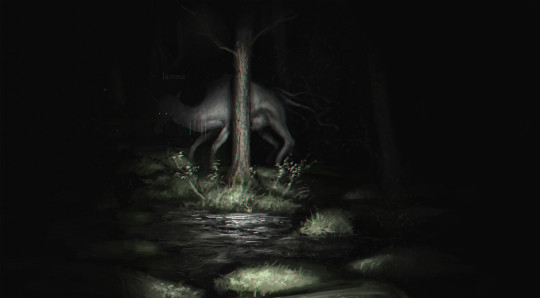
The Bäckahäst [Swedish folklore]
Evil aquatic horse spirits are a common trope in Germanic, Nordic and British folktales. The Scottish Kelpie, the Icelandic Nykur, the Norwegian Nøkk etc are all variations of (and derived from) the same story. In Sweden, this role is given to the Näck: an evil supernatural horse creature that convinces people to mount it and ends up drowning the victim.
In southern Sweden however, the Näck is replaced by the Bäckahäst, a similar monster. Originating in Skåne, this creature appears as a pale white horse (although this isn’t set in stone and some artists portray it as black) but otherwise resembles the Näck in most aspects, sometimes the two terms are even used as synonyms. But there are some regional differences. Interestingly, the Bäckahäst seems less dangerous than the more traditional Kelpie-like creatures. There are stories of these beings being tamed simply by putting a bridle on them, although they could also be forced into submission by using iron and steel. Once tamed, the creature could be used for ploughing or other agricultural activities which it excelled at because it needed neither rest nor food.
The name ‘Bäckahäst’ translate roughly to ‘stream horse’ or ‘brook horse’. The creature is also related to the Sjörå from northern Sweden.

Egerkrans’ popular modern book ‘Nordiska Väsen’ describes the Bäckahäst as having a mouth filled with razor-sharp teeth and claims that it has a particular fondness for human children, preferring them over other prey.
Interestingly, according to Höök, an old Swedish tradition claims that Bäckahäst is only able to hurt unwashed people. Clean people who have recently bathed cannot be harmed by the monster. Supposedly, this is because supernatural monsters were traditionally associated with filth and a lack of hygiene. Being clean and hygienic would hold evil at bay, and you can’t really blame people for believing in that superstition because many stories of evil spirits at the time were associated with real diseases. If illnesses were the work of evil monsters and personal hygiene was an effective tool against illness, it only makes sense that proper hygiene was thought to also keep evil spirits at bay.
Sources:
Egerkrans, J., 2013, Nordiska Väsen, B.Wahlströms, 126 pp.
Lindow, J., 1978, Swedish Legends and Folktales, University of California Press, 219 pp.
Höök, L. K., 2004, Vattnets renande och läkande kraft: Om hälsobrunnar, offerkällor och volontären Johan Lundin, Tio tvättar sig, Nordiska Museets Förlag, 47 pp.
(image source 1: Jessica Hardarson on Artstation)
(image source 2: Johan Egerkrans)
#Swedish mythology#Nordic mythology#creatures#monsters#aquatic creatures#mythical creatures#mythology#Kelpie
118 notes
·
View notes
Text
My (Swedish) take on the “Simple Russian Girl” trend from TikTok & Instagram.
Below the cut there’s an explanation of all the cultural refrences.
IG post | TikTok post

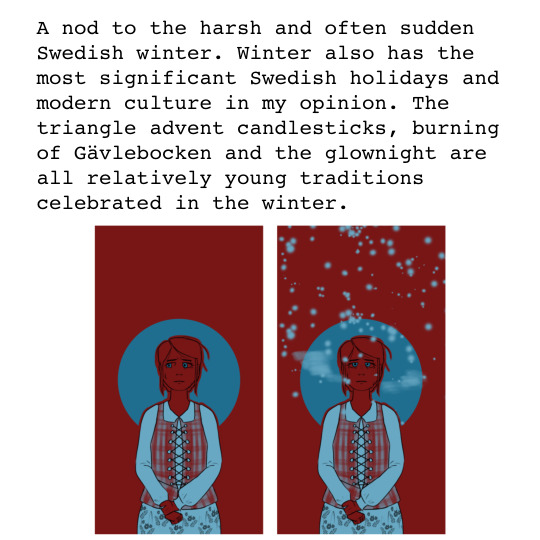







#simple russian girl#animatic#animation#nordic mythology#swedish mythology#swedish culture#Sweden#Swedish#trolls#norse mythology#mythology and folklore#folklore#swedish folklore#artists on tumblr#digital art#procreate#video
10 notes
·
View notes
Text

So, I participated in the @sequentialartistsworkshop Friday Night Comics workshop again today—actually, I still have some comics from previous weeks I haven't posted which I really ought to get to, but at least I'll get this one up so I don't fall further behind.
The project for today's workshop, hosted this week by Ellen O'Grady (@ellenogradyart on Instagram) was to make four cards that represented different aspects of yourself—positive and negative—through mythological or archetypal figures. First, participants answered four questions to guide their thinking of what aspects to represent. I'm heavily paraphrasing, but I think the questions were more or less as follows: 1. If someone who knew you well were to introduce you to a community intended to make the world a better place, what positive quality of yours would they name? 2. What other quality would you like to bring to the community? 3. What quality might interfere with your contribution to the community? 4. What is something you would do if you could do it with no societal disapproval?
Anyway, I wasn't completely sure of the distinction between #1 and #2, so the first two panels are just more or less positive qualities. The first panel, representing my drive to create things, is the Demiurge, which was sometimes represented as a snake with a lion's head. (Of course, in Gnostic philosophy, the Demiurge wasn't exactly a positive figure, so I guess maybe there's a bit of self-deprecation going on here.) The second panel represents the fact that I like to share knowledge, I guess? I mean, I work as a teacher (well, currently as a studio teacher most of my actual worktime is taken up just keeping an eye on things and making sure the minor on set is being treated well rather than actual teaching, but I'm still nominally a teacher), but I also like sharing knowledge through other means that are less direct and obvious, so I went with Mimir, a figure from Norse mythology who advised Odin; after Mimir was beheaded in a war, Odin continued to carry around Mimir's severed head, which continued to surreptitiously counsel him.
Panel three is the negative aspect, the poor time management that prevents me from getting anything done—and which I'm pretty sure is because I have ADHD. (I haven't been formally diagnosed, but the descriptions and diagnostic criteria I've read seem to be a really good fit.) I tried to think of any mythological figures who tried to do too much and didn't get much done or who otherwise showed symptoms of ADHD, and then I finally decided to go with the Tumblr-famous ADHD creature, BTW, bending perhaps the definition of mythological or archetypal a bit, but what the hey.
And finally panel four... well, despite my reliance on technology and constant computer use, I guess there's a part of me that wants to just... have nothing, and be part of nature. So I thought of the näcken, a figure from Swedish mythology who (at least according to some versions) just sits naked in rivers and waterfalls and plays the violin. (Okay, the violin isn't exactly natural, and I don't play the violin (I did take violin lessons as a young child, but that was a long time ago), but I could chalk it down to just representing the production of art in a natural setting or something.)
So yeah, I don't know if these were the best choices I could have made for these representations, but the time was limited for the workshop, so I went with whatever I came up with in the time.
(Why did I write "The Näcken" but just "Demiurge" without the article? For no good reason; I just didn't notice the inconsistency until it was finished.)
Anyway, I'll try to finally get some of the past Friday Night Comics workshop comics up within the next few days. I also was planning on participating in Art Fight again this year, but I went to sign in and the site seems to be down? Hopefully it'll be back up tomorrow...
#Friday Night Comics#FridayNightComics#Comics Workshop#ComicsWorkshop#Comic#BTW#ADHD creature#BTW creature#Näcken#Swedish mythology#Mimir#Demiurge
5 notes
·
View notes
Photo

First prompt is Nix 🌊🌊
The Nix, or Näcken (in Swedish), are shape-shifting water spirits, which take on human form. They appear in the myths and legends of all the Germanic peoples in Europe 💫💫
Nix is particularly skillful at playing the violin and sometimes married humans.
#mermay#mermay 2022#mermay2022#mermaycka#mermay prompt#memray prompts#mermaid#mermaid drawing#german mythology#swedish mythology#mythology
16 notes
·
View notes
Text
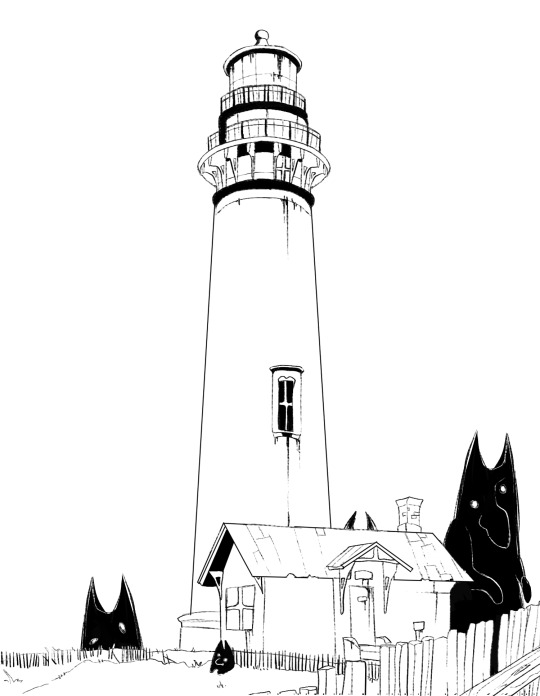
I’ve been thinking about both Swedish troll’s and light houses
1 note
·
View note
Text
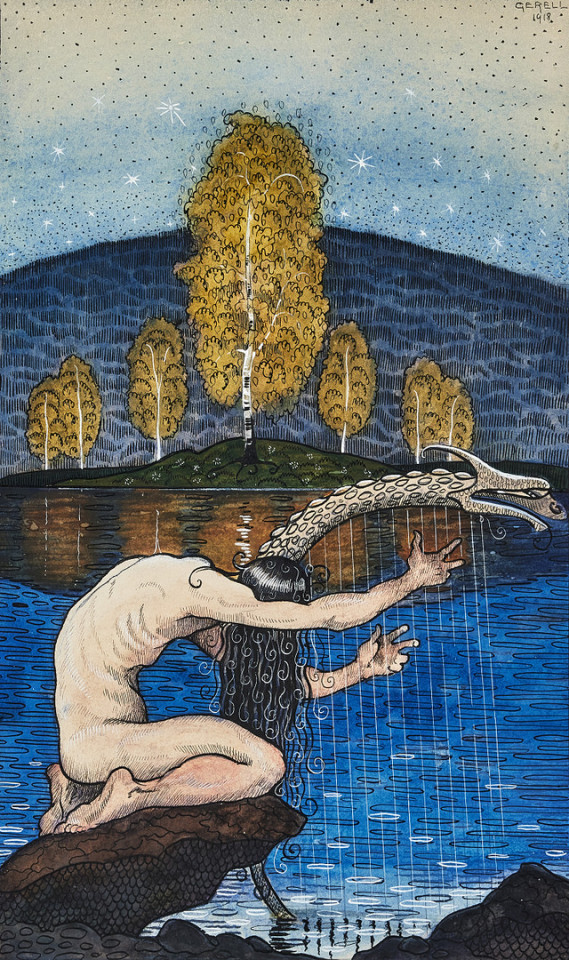
Greta Gerell - Der Hals (1918)
650 notes
·
View notes
Text
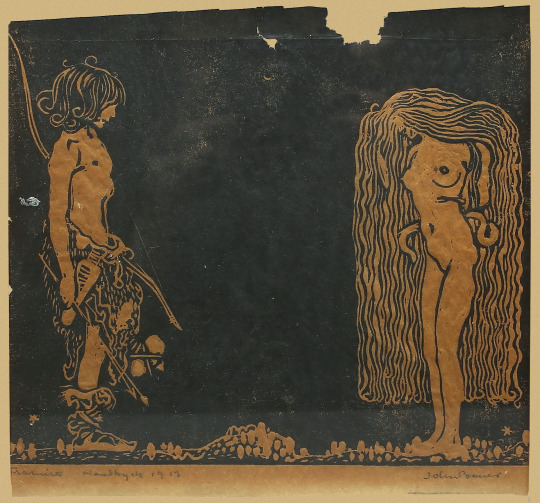
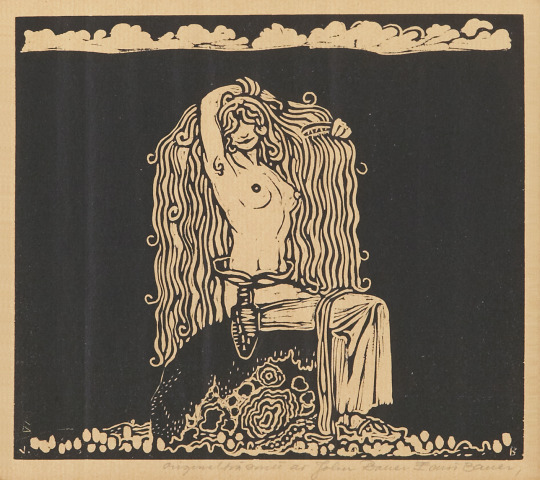

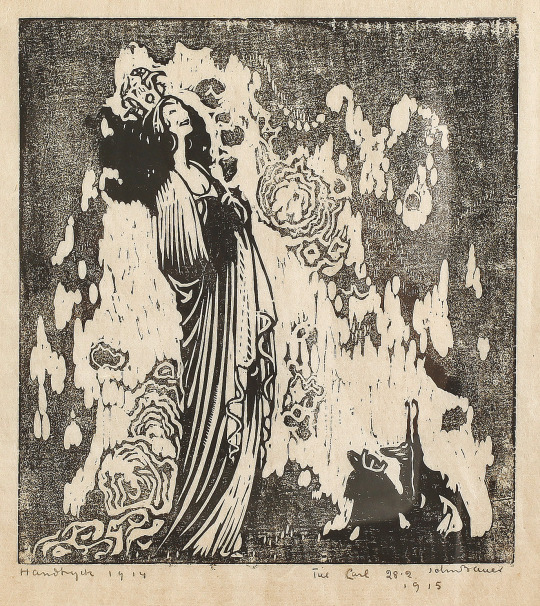



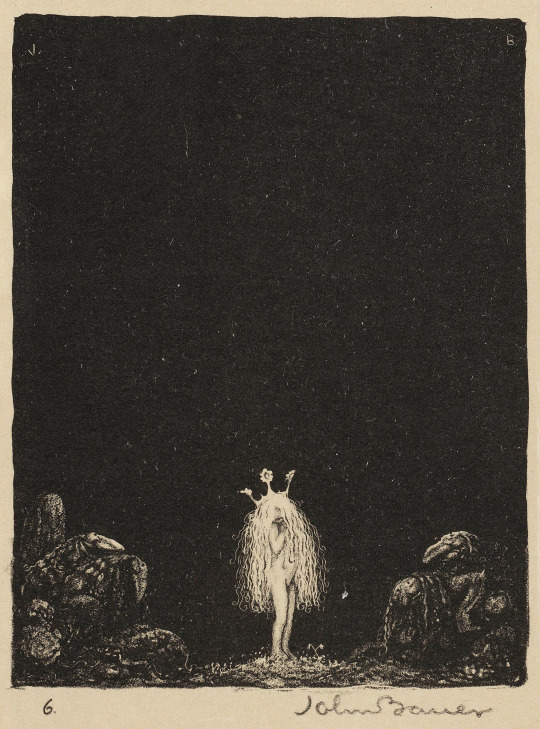





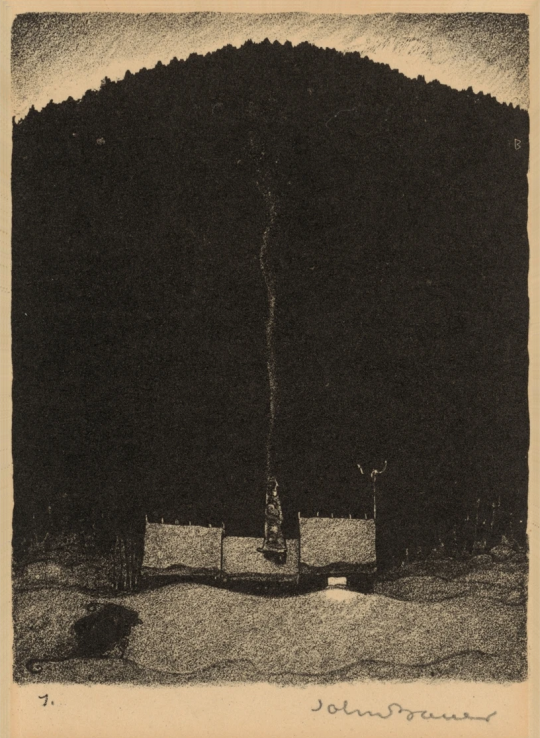
John Bauer - a mixed bag of lithographs, woodcuts and juicy leftovers
1K notes
·
View notes
Text

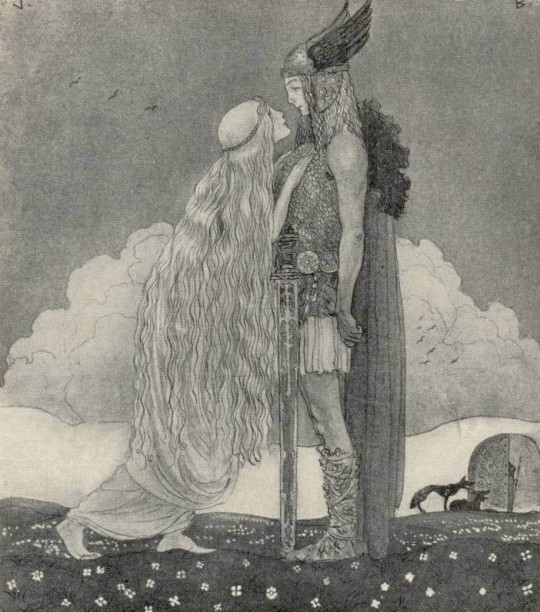

Illustrations from Our Father's God Saga by John Bauer (1911)
#john bauer#art#illustration#golden age of illustration#1910s#1910s art#vintage art#vintage illustration#vintage#swedish art#swedish artist#book illustration#mythology#norse mythology#odin#freya#svipdagr#tyr#fenrir#classic art
2K notes
·
View notes
Text
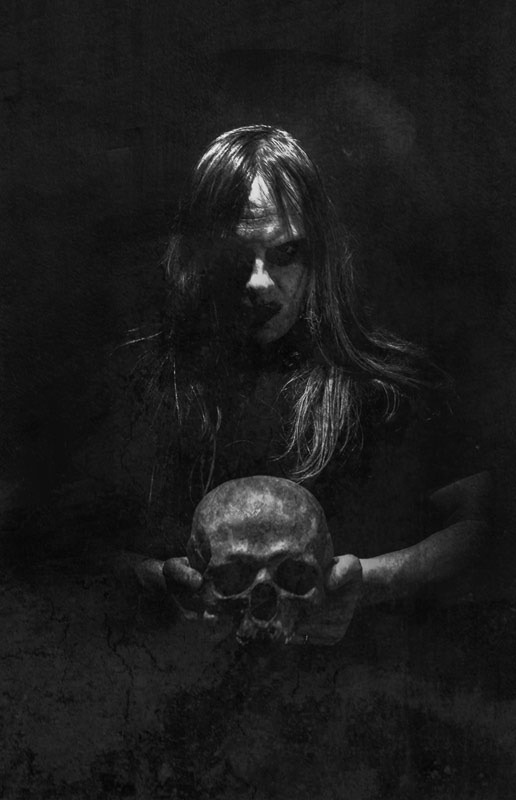
0083
Svartsyn black metal from 🇸🇪, relocated on 🇧🇪.
Ornias: everything
#svartsyn#black metal#swedish black metal#satanism#death worship#darkness#misanthropy#babylonian/sumerian mythology
57 notes
·
View notes
Text
I will never be able to unsee this now

Anglo-Saxon square headed brooch (6th century AD)
The Walters Art museum, Baltimore - United States of America

Hinge for a Vihals cabinet from IKEA.
Swedish design
21st century AD
#frankish#merovingian#viking archaeology#archaeology#carolingian#charlemagne#field archaeology#viking mythology#merovingian archaeology#germanic mythology#ikea#Sweden#Swedish archaeology#norse mythology#anglo saxon#field archaeologist#vikings#odin#viking#germanic#frisian#germanic folklore#germanic archaeology#wodan#anglo saxon archaeology#history#jewelry#norse#archaeology humor
189 notes
·
View notes
Text
In the process of creating a physical manifestation of my 2023 Yule Tomte
He is coming along very nicely, just need to Finnish some painting, but until he is finished, here is an idea of what he will look like, as provided by a fun little AI that my wife found.
He has not yet reveled his name to me yet, but I do hope he gets along with the other Tomte that are already living here

#pagan#norse mythology#norse gods#nordic folklore#nordic#tomte#nisse#gnome#scandinavian folklore#holly#antlers#viking#merry yule#yuletide#yule#ai art#ai image#norwegian#swedish#norway#sweden#iceland#greenland#folklore#seidr
76 notes
·
View notes
Text
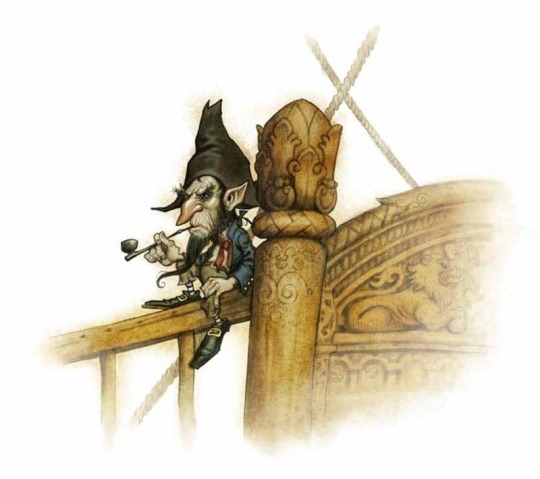

The Skeppsrå [Swedish mythology]
In Swedish folklore, the term ‘Rå’ is used to refer to a specific class of spirits. These beings are each tied to one specific habitat or domain, which they rule and protect. There is the Bergrå, the spirit of the mountains, who inhabits tall mountaintops. The Skogsrå is the guardian spirit of the forest, the Sjörå rules over a lake or other body of water, etc. But not all of the Rå spirits are tied to a natural habitat: some have become the spirit of man-made locations or buildings. There are guardian ‘Rå’ spirits of churches, stables, mine tunnels, etc. And then there is the Skeppsrå: the ship spirit. These beings are usually depicted as small, bearded men, often dressed in a sailor’s outfit. Some depictions give them some supernatural characteristics, such as elf-like pointed ears.
True to their nature as protective spirits of a ship, a Skeppsrå warns the crew of a boat of storms, bad weather and disasters that will hit the ship. Each Skeppsrå is bound to one specific vessel. As the subject of folktales, they aren’t as common as their more powerful cousins which rule over a specific biome. As such, information about them is quite scarce. The most complete account that I could find is that of Johan Egerkrans in his book ‘Nordiska Väsen’, however this work was intended as entertainment rather than a historically accurate collection of old folktales, but he does cite his sources, which is more than I can say for most authors in that genre. In any case, he describes the creatures as follows:
The Skeppsrå, also sometimes called Skeppsnisse, maintains the woodwork of a ship, exterminating pests like woodworm and preventing the wood from rotting or deteriorating. It keeps the order on a boat and will therefore punish sailors and crewmembers who are drunk or careless. Still, having a Skeppsrå on board is an enormous boon.
A Skeppsrå does not choose an existing boat to inhabit, rather it will oversee the creation of a vessel while it is still in the shipyard. There is an old story that the Skeppsrå was originally a wood spirit bound to a tree. If a tree inhabited by such a being is chopped down and used as lumber to make a ship’s keel, the spirit will become a Skeppsrå and is usually bound to the ship for the rest of its existence. In rare cases, the lumber used to build a boat comes from two spirit-inhabited trees. When that happens, both of the spirits become Skeppsrå and will fight among themselves for the right to oversee the ship. If they are particularly violent spirit, their squabbles might even damage the boat. In one old folktale, two such spirits were careless and their argument was so loud that a sailor discovered them. The man questioned the two strange little men and patiently overheard their arguments. He resolved the argument by appointing one of the two spirits to become the ship’s Skeppsrå, and promised to build another vessel so that the other spirit could become the Skeppsrå of that ship.
Curiously, this last story is virtually identical to an old German myth about a similar spirit called a Klabautermann. When a child died unbaptized and a tree grew on top of its grave, the ghost of the infant would inhabit the tree. Sometimes, the lumber of such a tree would be used to build a ship, and the ghost would become a Klabautermann: a protective spirit bound to that ship. Much like the Skeppsrå, these beings would appear as small, bearded men. Thus, I believe that these two folktales differentiated from the same original story.
Sources:
Klintberg, B. A., 2014, Svenska Folksägner, Norstedts, 529 pp.
Egerkrans, J., 2013, Nordiska Väsen, B.Wahlströms, 126 pp.
Lecouteux, C., 2016, Encyclopedia of Norse and Germanic Folklore, Mythology, and Magic.
(image source 1: Johan Egerkrans, illustration for Nordiska Väsen)
(image source 2: a Klabautermann, by Hetman80 on Deviantart)
#Swedish mythology#Scandinavian mythology#mythical creatures#spirits#mythology#world mythology#creatures
66 notes
·
View notes
Text



Creature design for the dating game! It's my take on a Mara!
#my art#sketch#digital art#monster#norse mythology#swedish folklore#norse folklore#folklore#teratophillia#terato#body horror
80 notes
·
View notes
Photo
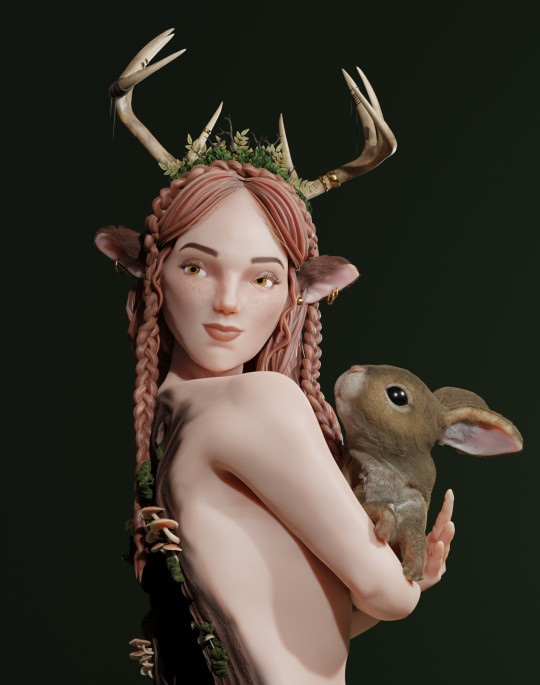
Legends and myths about trees
Legendary tree deities (21)
Skogsrå – the fatal nymph of the Scandinavian forests
The Skogsrå (Swedish: lit. 'the Forest Rå'), Skogsfrun ('the Mistress of the Forest'), Skogssnuvan, Skogsnymfen ('the Forest Nymph'), Råndan ('the Rå') or Huldran, is a mythical female creature of the forest in Swedish folklore.
It appears in the form of a small, beautiful woman with a seemingly friendly temperament. She appears like a woman from the front but seen from behind she often has a tail and a hollow back or skin like tree bark.
Those who are enticed into following her into the forest are never seen again. It was said that any human man who had intercourse with the Skogsrå became an introvert, as his soul had remained with her. If the seduced man is a hunter, he may be rewarded with good luck in the hunt, but should he be unfaithful to the Skogsrå, he will be punished with numerous accidents. He may put an end to a stormy night caused by her vengeance by firing a shot against her. Late folklore in Nyland, Finland describes silver bullets as effective means of killing a skogsrå.
Tolkien describes the Old Forest, a space filled with deep-rooted mysteries and danger in Middle-earth, as follows:
“The ground was rising steadily, and as they went forward it seemed that the trees became taller, darker, and thicker. There was no sound, except an occasional drip of moisture falling through the still leaves. For the moment there was no whispering or movement among the branches; but they all got an uncomfortable feeling that they were being watched with disapproval, deepening to dislike and even enmity. The feeling steadily grew, until they found themselves looking up quickly, or glancing back over their shoulders, as if they expected a sudden blow.”
– J.R.R. Tolkien FOTR. Ch. 6

木にまつわる伝説・神話
伝説の樹木の神々 (21)
スクーグスロー 〜 スカンジナビアの森に住む致命的な妖精
スコーグスロー(スエーデン語: 森の‘ロー’)、スコグスフルン(「森の愛人」)、スコグスヌバン、スコグスニンフェン(「森の妖精」)、ローンダン ‘ロー’またはフルドラは、スウェーデンの民間伝承に登場する神話上の森の女性の生き物である。
小柄で親しみやすそうな雰囲気をした美しい女性の姿で現れる。スクーグスローは前から見ると普通の人間だが、後ろから見ると尻尾があったり、背中が窪んでいたり、樹のような肌をしていたりする。
彼女に誘われ、森へ行った者は二度と帰ることはない。スコーグスローと交わった男性は皆、魂が彼女の中に置き去りにされているため、内向的になると言われている。狩人がスクーグスローと関係を持つと、獲物に恵まれる幸運を得ることもあるが、スクーグスローを裏切った場合、様々な事故が狩人に襲い掛かる。そんな時は狩人はスコーグスローに向けて銃を撃つことによって、事故の連続を止められるかもしれない。フィンランドのナイランドに伝わる晩年の伝承では、スコーグスローを殺す効果的な手段として銀の弾丸が描かれている。
トールキンは、中つ国において根深い謎と危険に満ちた空間である「古き森」を以下のように描いている:
「地面がどんどん高くなり、進むにつれ、木々はより高く、より暗く、より太くなったように見えた。静まり返った葉の間から時折水滴が落ちる以外は、何の音もしなかった。しばらくの間、枝の間からささやき声や物音は聞こえなかったが、彼らは皆、自分たちが不愉快な目で見られているような不快な感覚に襲われた。その感覚は次第に大きくなり、気がつくと、突然の一撃を予期しているかのように、素早く顔を上げたり、肩越しにちらりと後ろを振り返ったりしていた。」
- J.R.R.トールキン FOTR. 第6章
#trees#tree legend#tree myth#forest#forest nymphs#forest spirit#legend#folklore#mythology#skogsrå#scandinavian forests#swedish folklore#rå#huldran#nature#art
117 notes
·
View notes
Text

Garibaldi Lindberg - Centaurs (1895)
715 notes
·
View notes
Photo
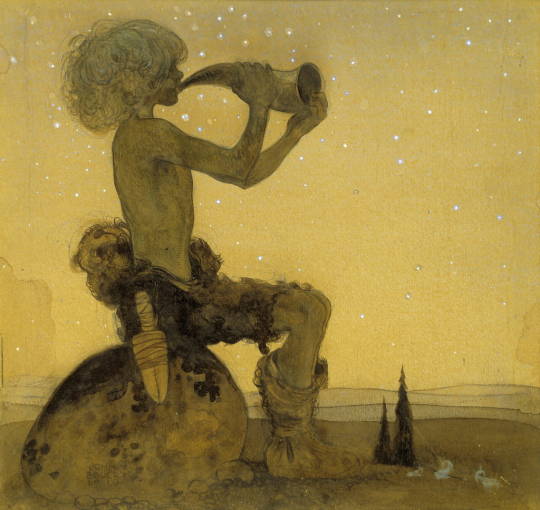
A Fairy Shepherd, 1910 (wc) by John Bauer (1910, watercolour)
#john bauer#shepherd#fantasy#mythology#fairy#fairytale#swedish#scandinavian#scandinavian mythology#illustration#tale#magic#nightsky#night#stars#giant#fairydust#legend#art#painting#horn#folklore#norse
69 notes
·
View notes